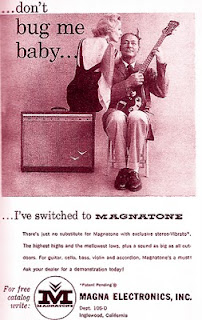Electro-chamber music: a new course
A new option at the Montbéliard Conservatory
In French conservatories, some music students prepare the Diplôme d'études musicales (DEM), a diploma most often with a major in instrumental performance, with an academic level corresponding to a high school diploma. In addition to developing their performance and interpretation skills, they take additional courses in Culture musicale. Next week, I'm giving the first class of a new course counting for such a Culture musicale credit. I entitled it Electro-chamber music (or, to be precise, Électro-musique de chambre):
The electric guitar revolutionized the course of music history by revealing previously unexplored sonic colors. Is it possible to further expand the range of possibilities by integrating our classical music intruments with electronic and computer technologies? All technologies are at our fingertips today, but how best can we use them to serve music? Such are the topics explored throughout this course. Each student plays her or his usual instrument and experiments with different techniques to transform its sound.
Each class is split between theoretical matters (analysis of musical works and study of electronic or computer systems for sound processing) and individual or collective practice on electronically enhanced instruments. Among the techniques that we are going to cover: guitar pedals, MIDI, MIDI enabled piano, looper, the microphone as a sonic creation tool, digital effect boxes, samplers, and software tools such as Ableton Live, Cycling 74 Max, Native Instruments Reaktor.
Electro-acoustic instruments: already a tradition
As we see in this ad from the sixties, using electronic sound processing beyond the world of guitar players is not a novel idea. Enlarge the picture, and you'll read:
There is no substitute for Magnatone with exclusive stereo-Vibrato®. The highest highs and the mellowest lows, plus a sound as big as all outdoors. For guitar, cello, bass, violin and accordion, Magnatone's a must!
I must mention that the picture comes from this very interesting book on guitar effects pedals (sponsored link):
During this academic year, I'm going to let you know from time to time about what we are covering and experimenting with the students. We're starting with a "simple" effect : the delay... To be continued...



Comments
Post a Comment